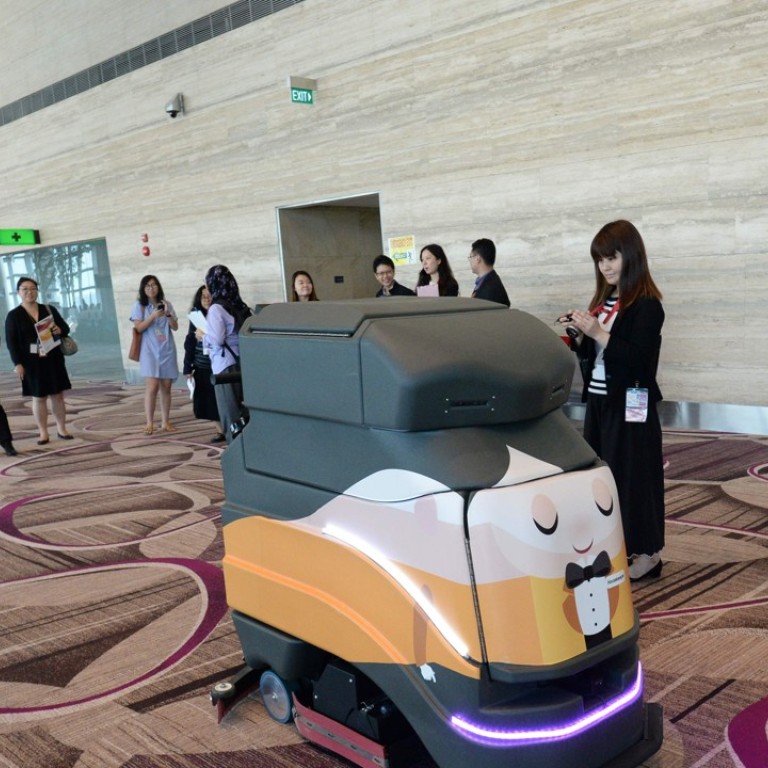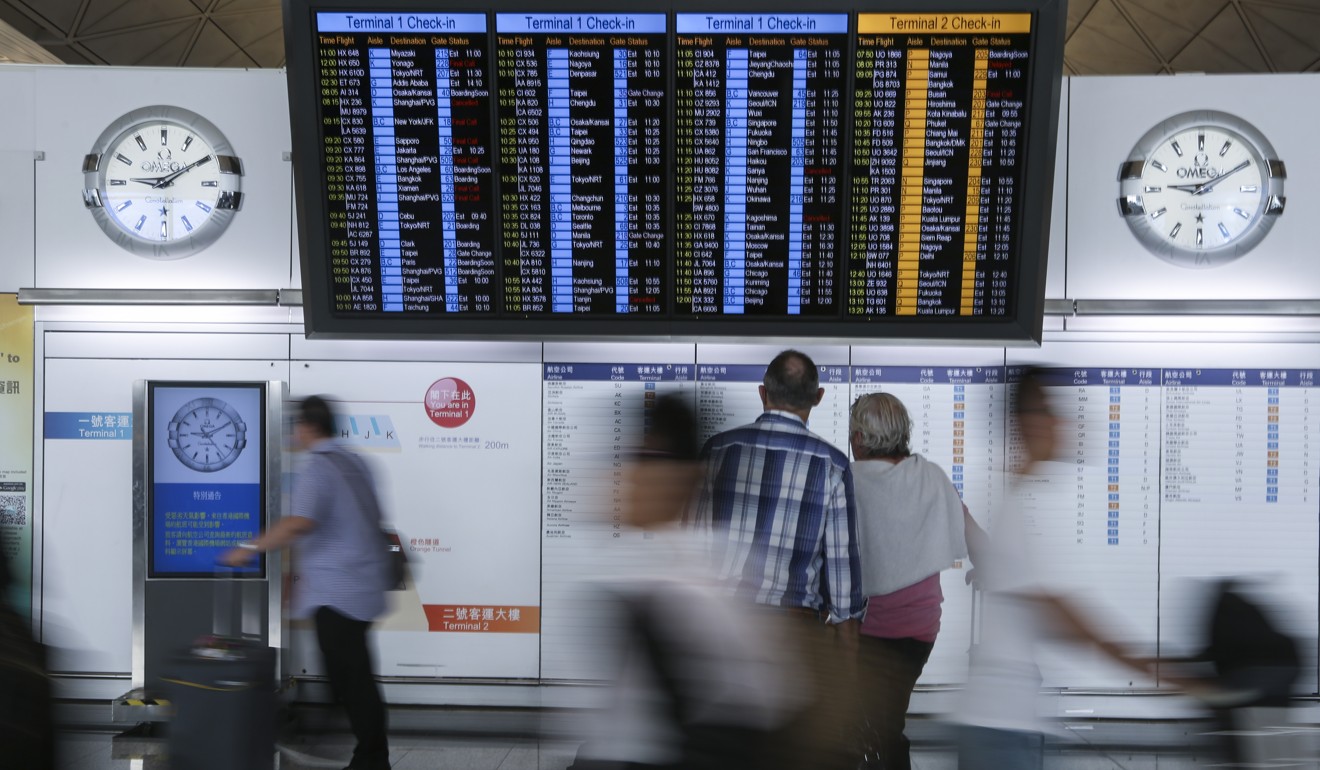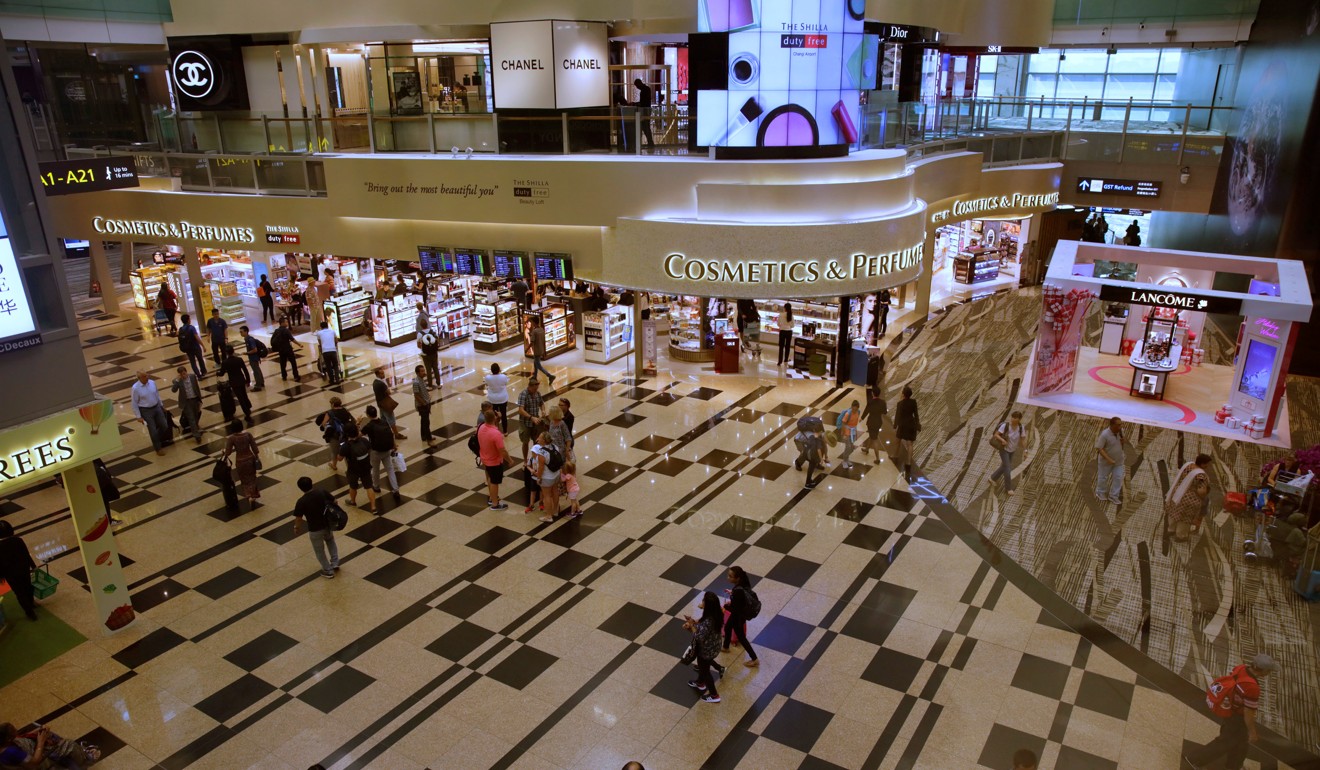
How Singapore’s futuristic Changi Airport Terminal 4 is a game-changer for the world
The plan is for automated check-in and security counters to move passengers faster, so they can relax and spend money shopping and eating
The airports of the future have landed, with grand plans of delivering a first-class experience even for those flying cattle class.
Think face-scanning technology, self-service ticketing and baggage counters, and smart security systems that can screen bags with laptops – all aimed at sending travellers on a “seamless” cruise from check-in counter to cabin, so they can bid goodbye to fumbling with bags and dreaded queues.
These features star in the futuristic new Terminal 4 at Singapore’s Changi Airport. The new terminal cost HK$5.6 billion (US$723 million) and opened on Tuesday.
Hong Kong’s flagship carrier Cathay Pacific Airways was the first airline to use it, when CX659 landed at 5.25am. Arriving passengers were feted with orchids, goodie bags and live music.
As Singapore’s Changi airport soars, is HK$141 billion upgrade a case of too little too late for Hong Kong?
Those who were visibly disoriented at the absence of staff at different checkpoints, from the gate to security and immigration, were directed to manned counters.
But self-service and automation are likely to become the norm at airports, as more operators realise the benefits of using technology to provide efficient, anxiety-free travel.

Changi Airport Group, despite maintaining its World’s Best Airport ranking for the fifth consecutive year, tore up its rule book and got rid of “sacred cows” to redefine the airport experience.
Besides automated passenger processing, Terminal 4 boasts art installations, “heritage” facades for retail outlets and a digitally streamed theatre performance to entertain passengers.
A cluster of LED screens at the security area flash snippets of the Lion City’s skyline.
“Terminal 4 is a flagship terminal for innovation and this is really a game changer here with regards to how we are going to operate and how passengers will experience their time,” Poh Li San, Changi Airport Group’s vice-president overseeing the development, told the Post on a tour of the new facility over the summer.
Asian airports already do not fare too badly in customer satisfaction polls.
Hong Kong airport places fifth again in annual world rankings as Singapore scores four years at the top
In the last eight years of the annual Skytrax survey of airport ratings, no fewer than five of the top 10 spots have gone to Asian airports.
Hong Kong International Airport (HKIA), Seoul’s Incheon and Tokyo’s Haneda airport consistently rank among the best. Beijing, Shanghai, Bangkok, Jakarta, Kuala Lumpur and Taipei are in the top 100 airports list.
Peter Miller, head of marketing for Skytrax, said airports worldwide “have woken up” to the benefits of turning airports into inviting spaces.
After all, travellers there are a captive audience and if they have more time and inclination to explore retail and food offerings, it spells bigger profits for operators.

Global travel retailer Dufry forecasts that Asia-Pacific will be the fastest-growing market in airport retail sales in the next five years. Luxury brands are especially bullish.
“Retail and advertising” made up just over 40 per cent of HKIA’s HK$18.6bn (US$2.3bn) revenue in 2016, generating HK$8.3bn (US$1.06bn) in pure profit for the operator.
While neither disclosed retail earnings separately, Changi raked in US$661 million profit from US$1.6bn in revenue last year, while Incheon reaped US$686m profit from US$1.6bn in revenue.
Chinese airlines poised for windfall as in-flight broadband fosters sky-high e-commerce
Now, HKIA is moving to expand its retail offerings in a big way, developing Sky City just next to the airport with a host of dining, shopping, entertainment and office facilities.
Seoul has an integrated airport city project, and Singapore has its HK$10 billion (US$1.28 billion) Jewel retail and lifestyle complex.
People familiar with the thinking of Hong Kong’s Airport Authority said the expansion was aimed at “push[ing] the boundaries” and moving HKIA into “the next generation and beyond”.
While no one from the airport operator was available to talk about its plans, it is understood that the expansion of Terminal 2, which includes a new passenger concourse, will “set the ground rules” in airport design and development, just like HKIA did when it opened 20 years ago.
How the expanded space will eventually look depends on emerging technologies and trends. But buildings would be “loose fit”, so that the facility can be adapted to suit future needs.

